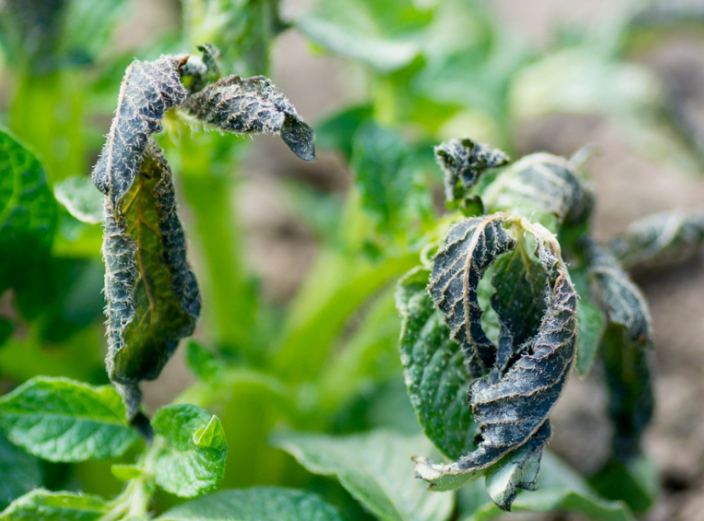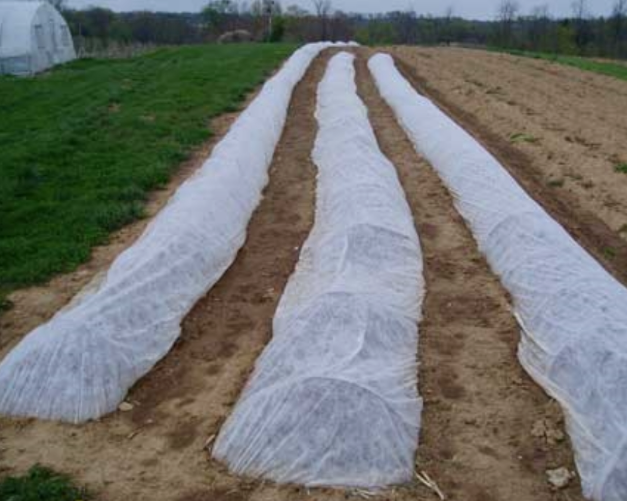Will Frost Damage Your Potatoes? How to Protect Your Harvest

So what does cold weather mean for our potato crops?
Potatoes are frost tolerant to some extent but cannot continue growing throughout winter. Consistent cold temperatures will kill off their green leaves before dormant tubers lie dormant before producing new sprouts in spring.
Will frost damage your potatoes? Continue reading to gain knowledge on how to shield your potatoes from frost, extend their growing season, and protect their delicate stems.
Are Potatoes Frost Tolerant?
One of the great characteristics of potatoes is their frost tolerant qualities, up to a certain point. Light frosts won’t have too much impact on them; however, once we reach hard freeze in autumn or winter time, green leaves could die back drastically, leaving nothing but tubers left standing.
Before we continue, it is important to distinguish between frost and freeze. A frost can occur even at temperatures not dropping to 32 degrees, visible on the leaves of plants.
As late summer transitions into fall, you can expect some frosty mornings that quickly warm up by midmorning but potatoes are resilient enough to withstand this kind of frostiness.
Hard freeze temperatures occur when temperatures fall below 28 degrees and remain there for an extended period. At these levels, your potatoes and most other things in your garden will die quickly.
Will frost damage your potatoes? How Late Can You Harvest Potatoes?
In order to accurately ascertain when and if the best time is to harvest potatoes, it’s essential that you know when the first regional frost date occurs in your area. Depending on what hardiness zone you live in, your first frost date could occur either earlier or later in the fall season.
Are you having difficulty determining your local frost date? Enter your zip code into this website, and it will tell you! For optimal harvesting success, harvest potatoes before the ground freezes solid as this will make retrieving them much harder.
For my own benefit, I like to harvest all of my potatoes before Thanksgiving. If you live somewhere warmer, the harvest date can possibly be moved forward by two weeks.
If you leave them in the ground over winter, there is still the possibility that their tubers may survive and produce new shoots come spring; but this can be hit-or-miss and they could rot before producing new potatoes.
How to protect potatoes from frost
When frost appears in the forecast, there are certain strategies you can employ to extend the season and protect your potatoes from becoming frostbitten. Will frost damage your potatoes?
Row cover:
Frost cloth (reemay) is the go-to method of protecting plants from cold temperatures, providing warmth while simultaneously keeping out any potential cold drafts.
Fabric should never come in contact with plants as this could cause serious harm. For best results, place metal hoops over rows so you can drape the frost cloth over.
Once your cloth is on, it’s important to find some weight to secure it against wind-blown elements. I use bricks lying around but many others use sandbags or anything heavy as an anchor point; any solution will do.
Frost cloth comes in many different sizes and thicknesses to provide insulation to plants, keeping them 3 degrees warmer than their surroundings.
If it’s projected to get extremely cold, consider layering on another frost cloth for increased insulation.
Frost cloth does have one drawback, it makes sunlight harder to reach your plants, so use only for short-term solutions such as protecting newly planted seeds or seedlings from frost damage.
If night temperatures are only cold, then covering potatoes overnight could work; then uncover them when morning arrives once temperatures have warmed up again. I wouldn’t leave frost cloth on plants for more than 24 hours as they might damage plants over time.
If temperatures become consistently colder, it’s wise to harvest what crops you can while the opportunity exists.

Other covers
If your garden doesn’t feature long rows of potato plants, row cover might not be an efficient solution. Instead, if there are just a few plants spread throughout, cardboard boxes or paper bags might provide better options to cover them all. Just as when using frost cloth, make sure that during the daytime, uncovering your plants allows them access to sunlight.
Hilling
Hilling is the practice of piling up soil along the sides of your potato plants to promote new growth and increase tuber yield. Usually done during their growing season, hilling helps increase tuber yield as well.
Hilling your plants can also serve as an effective frost protection measure. By adding extra insulation to protect their underground tubers from cold temperatures.
Grow frost-tolerant varieties
This tip should be seen more as a proactive strategy for prolonging the harvesting season than as reactive advice. To maximize harvest success and gain additional yield from this year’s potato harvest, select varieties with higher frost tolerance such as Russets, Elbas or Lehigh.
Can potatoes be grown in the winter?
Yes. Providing your climate or growing space are suitable, it may be possible to continue cultivating potatoes throughout the winter season.
Otherwise, it’s unlikely any potatoes will grow over the winter in temperatures consistently below 32 degrees. Once foliage dies back, any tubers still underground go dormant until soil temperatures return to normal; new shoots won’t appear until warmer soil temperatures emerge again.
If you are worried that it will be impossible for you to harvest all your potatoes before the ground freezes, add some straw insulation to the beds in order to help keep them warmer for a bit longer giving yourself enough time for harvesting!
Do you want to know Can You Plant Sprouted Garlic? We Put It to the Test
Takeaway!
Will frost damage your potatoes? Now that you understand all there is to know about protecting potatoes from frost, my best advice would be to cover them with frost cloth or even cardboard boxes if any cold temps are imminent.
Make an attempt to harvest any tubers still present in the soil before it freezes completely, as once frozen ground becomes impossible or nearly so to dig through.
Any tubers left in the ground through winter have the potential to produce new sprouts when spring rolls around, though there’s no guarantee. Your best bet would be harvesting what can be salvaged in fall before planting more seed potatoes for planting come spring!
